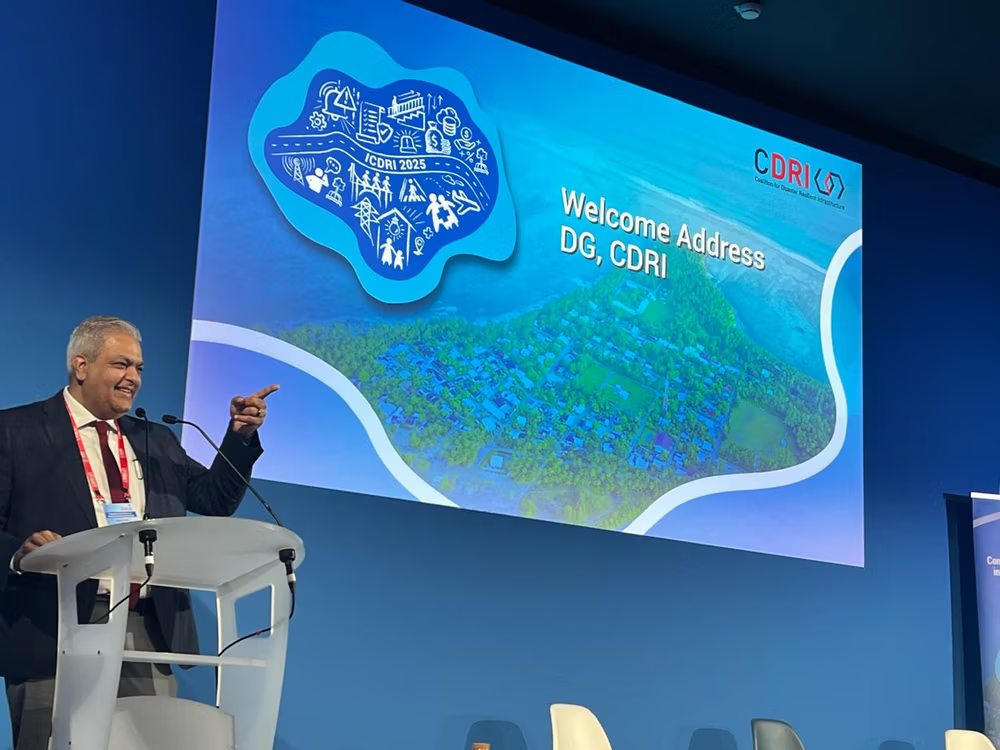About 37 per cent of the world’s population lives within a 100-km coast, where the population density is twice the global average. These coastal communities contribute an estimated $1.5 trillion to global GDP annually, a figure projected to rise to almost $3 trillion by 2030.
In addition, nearly 90 per cent of the goods being moved globally are transported by sea. Climate change is intensifying climate-induced hazards, both hydrometeorological disasters and slow-onset events, and creating new risks for places and communities.
In the run-up to the third UN Ocean Summit in Nice, hosted by France and Costa Rica, from June 9-13, New Delhi-headquartered Coalition for Disaster Resilient Infrastructure (CDRI) Director General Amit Prothi talked to IANS exclusively in an interview about the infrastructure in small island developing states (SIDS) that is at much greater risk compared to other countries. A third of India’s population lives in coastal areas.
Prothi stated that in coastal regions, rising temperatures have increased the frequency and intensity of heavy precipitation events, such as hurricanes, cyclones, and flooding. Additionally, extreme storms and sea-level rise are resulting in greater coastal flooding, storm surges, and coastal erosion.
He believes there is an increasing emphasis on mobilizing private finance for disaster risk reduction and enhancing infrastructure resilience, especially in developing countries and Small Island Developing States (SIDS). “CDRI’s Global Infrastructure Resilience report highlights that most new infrastructure investments over the next 30 years will occur in low- and middle-income countries, necessitating resilient assets to protect communities and promote growth,” he said.
The CDRI, launched in 2019 by Prime Minister Narendra Modi at the UN Climate Action Summit, is an international organization established by the Government of India to provide leadership on the topic of disaster resilience. India serves as the Permanent Co-Chair, while France holds the Rotational Co-Chair position from April 2024 to March 2026, following previous co-chairs, the United Kingdom and the United States.
CDRI’s initiatives prioritise resilient infrastructure and services that are vital for socio-economic growth, including health, transport, power, and telecommunications. Of particular focus are high-risk geographies, including coastal, mountainous, urban, and Small Island Developing States (SIDS) areas.
Prothi says infrastructure in SIDS is at much greater risk compared to other countries. When asked how far CDRI can support them, he told IANS, “SIDS are highly vulnerable to extreme weather events that can overwhelm infrastructure and disrupt essential services like transport, electricity, and water. These disruptions, in turn, impact livelihoods, public health, and economic stability. To address these risks, the coalition’s IRIS initiative, funded by India, Australia, the UK, and the EU, supports SIDS with technical assistance, capacity building, and knowledge resources.”
Currently, CDRI is funding 24 projects across 25 Small Island Developing States (SIDS), with a total financial commitment of $13.8 million. These projects are being implemented in collaboration with local governments, regional organisations, and technical institutions. Notable projects include strengthening housing stock in Dominica for over 72,000 people, developing a multi-hazard early warning system in Fiji for 900,000 people, improving health infrastructure in Haiti, enhancing school facilities in Comoros, and developing drainage and irrigation systems in Guyana for over 700,000 beneficiaries.
A significant milestone at the 29th Conference of the Parties (COP29), hosted in Baku in November last year, was CDRI’s announcement of $8 million in funding for SIDS for crucial areas like early warning systems, coastal infrastructure, and water management. Throwing light on CDRI’s role at COP30 in Brazil this year and beyond, the Director General, who’s feeling optimistic, told IANS, “At COP30, CDRI will continue to emphasise that disaster resilient infrastructure is crucial for climate change adaptation, linking sustainable development to climate action. It remains essential to integrate resilience into all infrastructure, new, rebuilt, or retrofitted.”
Prothi said, “The CDRI will showcase the ‘resilience dividend’ through the launch of the second Global Infrastructure Resilience (GIR) report. This report, along with discussions, will reemphasise the long-term benefits of resilience investments, which far outweigh initial costs.”
According to him, the CDRI will also showcase region-specific programmes for Africa and Small Island Developing States (SIDS), demonstrating how localised efforts can help achieve global climate goals in line with COP30’s vision of a Global Mutirão. In May at the Panama Climate Week, the COP30 Presidency, Brazil, discussed the development of a global framework to realise the Climate Mutirão initiative, which aims to build a chain of mobilisation and turn climate commitments into action.
Prothi believes that innovative financial tools, such as catastrophe bonds and parametric insurance, are key to filling financing gaps in vulnerable areas. Also, strengthening institutions, incorporating resilience in planning, and leveraging financial mechanisms can foster both public and private investment. Additionally, tailored instruments, such as multi-country parametric insurance, can provide swift financial relief after disasters, while strengthening infrastructure agencies and implementing early warning systems are essential for risk reduction and preparedness.
–IANS





